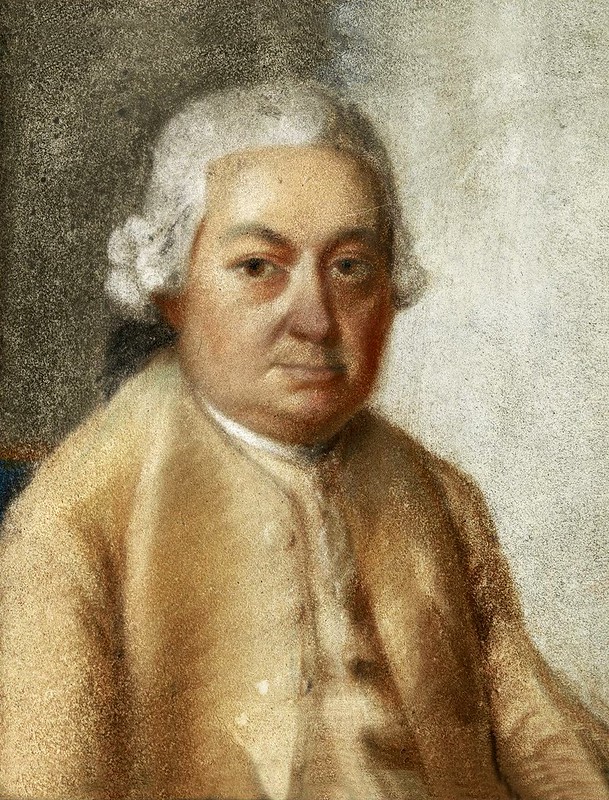Carl Philipp Emanuel Bach (1714-1788)
- Sinfonia in C-Dur (1755), HelB 649 / Wq 174
Performers: Gοttingеr Barockorchеster; Antοnius Adаmskе (conductor)
---
German composer and church musician, the second surviving son of Johann
Sebastian Bach and his first wife, Maria Barbara. He was baptized on 10
March 1714, with Telemann as one of his godfathers. In 1717 he moved
with the family to Cöthen, where his father had been appointed
Kapellmeister. His mother died in 1720, and in spring 1723 the family
moved to Leipzig, where Emanuel began attending the Thomasschule as a
day-boy on 14 June 1723. J.S. Bach said later that one of his reasons
for accepting the post of Kantor at the Thomasschule was that his sons’
intellectual development suggested that they would benefit from a
university education. Emanuel Bach received his musical training from
his father, who gave him keyboard and organ lessons. From the age of
about 15 he took part in his father’s musical performances in church and
in the collegium musicum. He appears relatively seldom as a copyist, no
doubt because, as an able musician himself, he was usually excused such
duties. The one large-scale work of sacred music in Leipzig mainly
copied by him is the anonymous St Luke Passion (bwv246), obviously
arranged by J.S. Bach to an urgent deadline for Good Friday 1730. On 1
October 1731 Emanuel matriculated at Leipzig University. Following his
godfather’s example, he studied law, although he was obviously destined
for a musical career. His first compositions were probably written about
1730. They consisted mainly of keyboard pieces and chamber music.
Deciding to become a musician, he was recommended to Crown Prince
Frederick in Rheinsburg, and upon the crown prince’s crowning as
Frederick II of Prussia, he moved to Berlin as a chamber musician, a
formal title granted in 1746. As an active member of the Berlin School,
he participated in the intimate inner circle of musicians and writers of
the period, producing a seminal treatise on keyboard playing, Versuch
über die wahre Art das Clavier zu spielen, in 1752. The death of his
godfather Georg Philipp Telemann in 1767 offered him the opportunity to
seek the appointment as city Kapellmeister in Hamburg (a post that was
temporarily occupied by Georg Michael Telemann).
From 1768 to his death, he was the leading musician in the city, whose
friendship with major literary figures such as Friedrich Gottlob
Klopstock and Johann Heinrich Voss, his pedagogical efforts at the
Johanneum, and the maintaining of his close ties to colleagues in Berlin
made him one of the most prominent figures in music of the period. Over
the course of his long career, he composed almost 900 works in all
genres save opera (and there is an indication that he may have made an
abortive attempt at one). One of the main figures in the emerging
empfindsamer Stil (Empfindsamkeit) with its emphasis upon emotion and
drama in music, he created compositions that were far ahead of his time
in terms of harmony and form. For example, the introduction to the
oratorio Die Auferstehung und Himmelfahrt Jesu is both monophonic and
atonal, while his free fantasies move rapidly from tonal center to tonal
center using sometimes harsh dissonance, extreme changes in tempo and
dynamics, and effective musical moods, all without metrical regularity.
Ludwig van Beethoven lauded him as his spiritual father, and almost all
other composers of the period imitated his style. He published works,
such as the Klopstock’s Morgengesang, by subscription, having control
over much of his own creative output. His compositions include 370
miscellaneous works for keyboard (sonatas, fantasias, etc.), 69 keyboard
concertos (plus 20 “sonatinas” for keyboard and orchestra), 11 flute
concertos, 19 symphonies, two keyboard quartets, six pieces for
Harmoniemusik, 37 sonatas for various instruments (violin, viola da
gamba, harp, flute, etc.), 48 trio sonatas, 30 pieces for musical
clockwork, 277 songs and secular cantatas, a Magnificat, two Psalms, 22
Passions/Passion cantatas, an oratorio, 13 large-scale choruses, an ode,
14 chorales, four Easter cantatas, 26 pieces for Hamburg celebrations,
and nine cantatas. He was the most important composer in Protestant
Germany during the second half of the 18th century, and enjoyed
unqualified admiration and recognition particularly as a teacher and
keyboard composer.

Cap comentari:
Publica un comentari a l'entrada